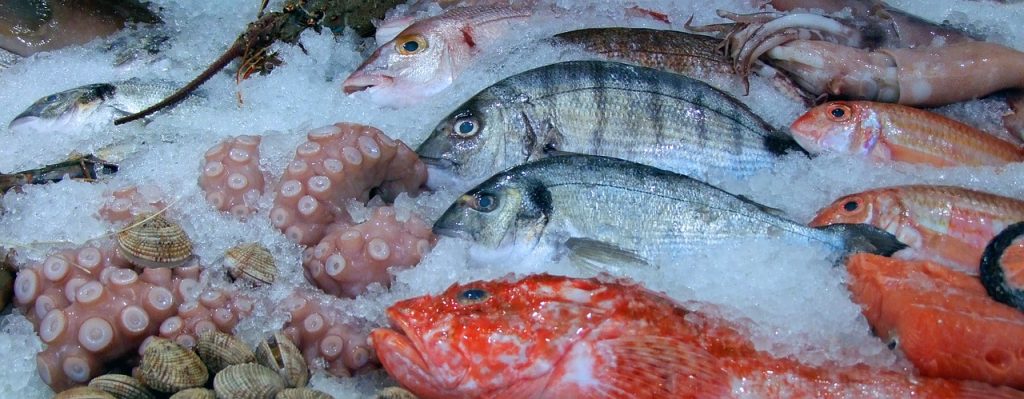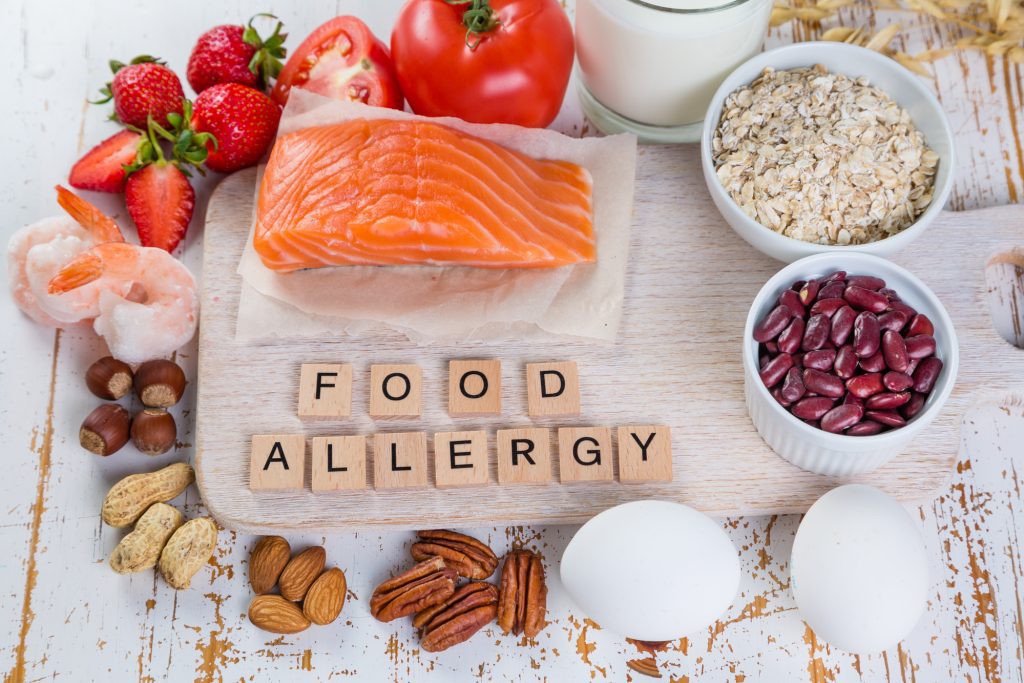Food allergy affects about 1% of adults and 7% of children in our country. Food allergy in children often recedes into adulthood. There is often a family history of incidence, which raises the possibility of heredity.
Food allergy is caused by an abnormal response of the immune system. It occurs when the immune system mistakenly recognizes a food ingredient – usually protein – as dangerous and triggers a defense reaction against it. The allergy symptoms are seen when the defense antibodies fight against the ingredient perceived as dangerous.
The most common food allergens in adults are eggs, shellfish, fish, and peanuts. In children, the most common allergens, according to foreign literature, are milk, soya, eggs, fish and seafood, and oilseeds.
Gluten
Today, many people follow a gluten-free diet out of fashion or other beliefs without really knowing what gluten is and whether a gluten-free diet is medically and dietetically justified.
Gluten is made up of proteins called gliadin and glutenin. Chicory is identical to gluten.
Chicory or gluten is a mixture of two proteins.
What is gluten?
Besides the high carbohydrate content of cereals, they are the highest in protein. However, it should be noted that they are not a complete protein because they do not contain all the so-called essential amino acids for life! Complete proteins are of animal origin.
It is not an easy task to completely exclude gluten from our daily diets, as the grains that gluten-intolerant people cannot eat are often present in other products. Therefore, we need to be aware of the gluten content of foods.
If you are gluten intolerant, it is important to avoid it
- Wheat and foods containing wheat
- Rye and foods containing rye
- Barley and foods containing barley
- Bran and foods containing bran
- Spelt and foods containing spelt
- Kamut wheat and foods containing kamut wheat
- Malt and foods containing malt
In addition, all processed and ready-to-eat foods likely to contain the above cereals are prohibited for people with gluten intolerance. These include bakery products, pastries, cakes, and biscuits, as well as breaded meats, most types of salami, and sausages. Also be careful with dried fruit, as the drying process is often accelerated by the addition of cereals, and gluten is also present in many soft drinks and alcoholic beverages. Pay particular attention to the composition of instant drinks, as these are also usually fortified with cereal derivatives. Although oats do not contain gluten, oatmeal or oat flakes are not recommended for people with gluten intolerance, as gluten contamination can occur during harvesting or processing.
Sesame seeds
The increase in sesame allergy in recent years is partly due to the growing number of products containing sesame seeds and sesame oil. Sesame oil is considered a healthy cooking oil and is used in a variety of food preparations, including some vegetarian dishes, salad dressings, and many Middle Eastern and Asian dishes. The popularity of international cuisine may also be driving the growth of sesame allergy.
Sesame oil is also used in many pharmaceutical products, as well as in cosmetics and skin care products. It is ironic that sesame oil is used in these products, as sesame has a little reaction in most people with weak immune systems.

Milk
Milk allergy is a disease that 90% of young children outgrow by the age of three. Milk allergy that persists later in life is only 10% common. The earlier milk allergy is detected, the greater the chance that the child will grow out of it later.
The diet should not include cow’s milk or any food made from milk. In addition to cow’s milk, milk from goats, sheep and mares is not allowed, and various cold cuts and medicines may contain milk protein. People allergic to milk may use milk substitutes.

Eggs
Egg allergy is the most common food allergy in both young children and adults, along with milk. 6-8% of children under the age of 3 are allergic to eggs.
In young children, the risk of developing an egg allergy is increased if eggs are introduced too early in the child’s diet. To prevent the development of an allergy, it is advisable to give your child their first egg over the age of one.
Fortunately, egg allergies that start in early childhood are likely to develop by the age of 3. However, it is often the case that freedom from symptoms does not develop until later, at the age of 6-8 years. However, egg allergy may persist throughout life. People who are allergic to eggs are also more likely to be allergic to other foods. Egg allergy in young children is expected to develop in 4 out of 5 children.
It is not just a matter of not eating boiled and fried eggs afterward, but also of avoiding foods containing egg white.
- You might be able to talk your egg-allergic child off ice cream. It’s not always easy, but if your child keeps getting symptoms after one ice cream, sooner or later he or she may see the need to give up ice cream.
- However, egg whites are also found in other processed foods such as bakery products and pasta. Certainly, if you have any allergies, you need to pay attention to the ingredients in the food you are buying.
When cooking and in the diet, eggs should be replaced by other foods. Use potatoes instead of eggs to mash and thicken food. Rice or semolina can also be used to soften food.
By eating vegetables, dairy products, and meat, you will not be deficient and you will have a varied diet.
Celery
There is certainly celery allergy, but it is mainly a problem for people allergic to birch pollen when cross-allergies occur. And the number of people allergic to birch pollen is increasing every year.
Although typically rare, celery can also cause or trigger allergies. So people who are sensitive should avoid eating vegetable.
In addition to its many benefits for the body, frequent consumption is not recommended for people with kidney disease due to its diuretic effect.
Peanuts
Salted peanuts, and peanut butter, are a favorite among adults and children alike. However, peanut allergies are also very common in children. Allergy to peanuts is one of the most severe food allergies and can lead to anaphylaxis, even when consumed in minimal amounts.
Peanuts are basically a member of the legume family (similar to lentils and peas), but the protein they contain has a similar structure to nuts. Therefore, someone who is allergic to peanuts may also be allergic to nuts such as almonds, walnuts, pistachios, pecans, cashews, paradise nuts, and European hazelnuts.
Peanut allergy occurs when the body’s immune system mistakenly recognizes this protein in peanuts as a harmful substance and releases a chemical (histamine) into the bloodstream that triggers allergic reactions.
Nuts
Symptoms of nut allergy occur immediately after eating the nut. It may include numbness of the mouth, itching, skin rash, swelling, breathing problems, abdominal pain, diarrhea, nausea, vomiting, dizziness, fainting, or even life-threatening anaphylactic shock, which is a condition that requires immediate medical intervention and affects the whole body.
Heightened precautions
The only way forward for those affected is therefore to exercise extreme caution when choosing food and to avoid any preparation that may contain traces of the allergen in question. On the one hand, experts recommend that every time they go shopping, they should check the composition of the products they choose: manufacturers may change a tried and tested recipe and the ingredient in question may be added to a food that has not previously caused any problems.
It is also important that the strictness does not only apply to food: body and hair care products and pet food may also contain the allergenic nut.
Fish
Of the allergens found in fish, most complaints are caused by parvalbumin, which is present in the flesh of bony fish. There is a debate among researchers about whether freshwater fish and marine fish are triggered by the same allergen.
One view is that there is a common protein found in all fish, regardless of species. Another study suggests that the human body’s production of antibodies is species-specific, so someone who is allergic to one fish may not be allergic to another.
It is also often difficult to decide whether the symptoms that appear after eating fish are really an allergic reaction or just a pseudo-allergic reaction caused by the consumption of large amounts of histamine.
Fish contain very high levels of histamine, and since the gastrointestinal system is not always able to break down this high level of histamine, the absorbed histamine can cause symptoms identical to those of a real allergic reaction. Such pseudoallergic reactions are particularly common after the consumption of salmon. In such cases, antihistamine drugs can provide rapid relief.
Freshwater fish are less allergenic than marine fish.

Seafood
In the case of various shellfish, crabs, and squid, the allergic reaction is triggered by our body’s defenses against the proteins they contain (tropomyosin, myosin, and arginine kinase). The symptoms are similar to other severe allergies, but seafood allergies can often be confused with the symptoms of food poisoning after eating spoiled or contaminated food.
Soy
Soya beans belong to the legume family, which includes foods such as kidney beans, peas, lentils and peanuts. Whole, unripe soybeans are also known as edamame. Although primarily associated with tofu, soy is found in many processed foods, such as:
- condiments such as Worcestershire sauce and mayonnaise
- natural and artificial flavorings
- vegetable broths and starches
- meat substitutes
- fillers in processed meats, such as chicken nuggets
- frozen foods
- most Asian foods
- certain cereals
- certain peanut butter
Soy is one of the hardest products for allergy sufferers to avoid.
Last updated: September 24, 2023


